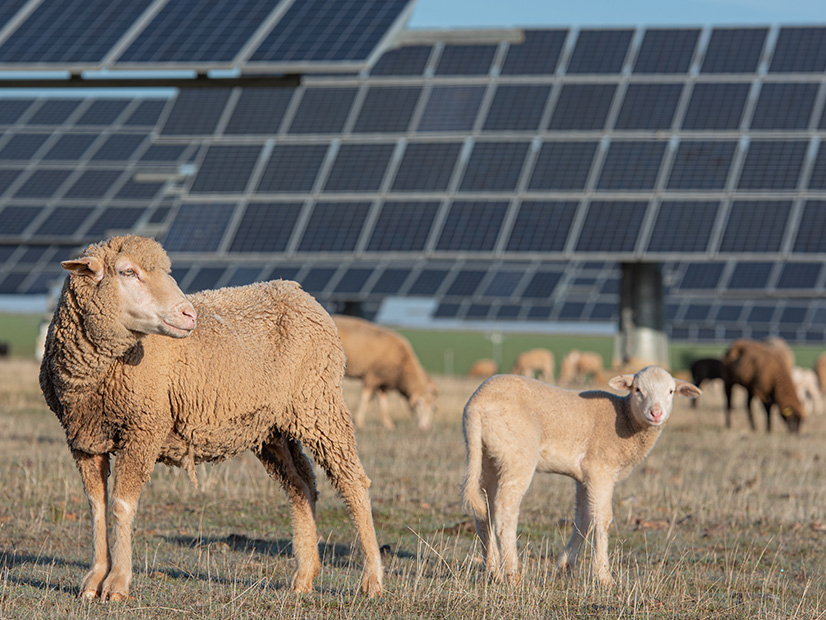The U.S. Department of Agriculture has announced $10.7 billion in funding from the Inflation Reduction Act to help rural electric cooperatives across the country stand up clean energy, zero-emission and carbon capture projects.
Agriculture Secretary Tom Vilsack described the funding, announced Tuesday, as “the single largest investment in rural electrification since the Rural Electrification Act of 1936.” That law, signed by President Franklin Delano Roosevelt, provided critical loans to farmers and rural communities forming electric cooperatives during the Depression.
The new funding “continues an ongoing effort to ensure that rural America is a full participant in this clean energy economy,” Vilsack said during an advance press briefing on Monday.
The largest chunk of the IRA dollars — $9.7 billion — will go to the Empowering Rural America (New ERA) program, offering “a mix of loans grants and loan modifications to support the purchase or ownership of renewable energy systems, zero-emissions and carbon capture systems,” Vilsack said.
Funding will be “exclusively for rural electric cooperatives,” he said, adding that the IRA allows for “stacking of benefits.” That means projects also can take advantage of production tax credits and investment tax credits in the IRA.
As nonprofit organizations, electric co-ops have previously not been able to take advantage of the ITC but are now able to under the IRA’s direct payment provisions.
The second program, with $1 billion in funding, is the Powering Affordable Clean Energy (PACE) program which will “provide loans — a portion of which can be forgiven — in connection with development of renewable energy projects or energy storage,” Vilsack said. These loans will be open to a broader range of applicants, including corporations, municipalities, co-ops and tribes, he said.
There are three categories of loan forgiveness, ranging from 20% to 60%, depending on where the project is located, Vilsack said. For example, projects in Puerto Rico, Micronesia, the Marshall Islands, Palau and tribal communities will be eligible for 60% forgiveness, according to the USDA announcement.
Micronesia, the Marshall Islands and Palau are island nations that together total more than 2,300 small islands, with loose affiliations with the U.S.
The goal of the program is “to make clean energy affordable for vulnerable, disadvantaged, tribal and energy communities to heat their homes, run their businesses and power their cars, schools [and] hospitals,” the announcement said.
Figuring in repayment of loans over time, Vilsack said, the $1 billion could be stretched to provide $2.7 billion in loans.
Letters of interest for New ERA are due between July 31 and Aug. 31, while letters of interest for PACE will be accepted from June 30 to Sept. 29, according to the USDA.
Jim Matheson, CEO of the National Rural Electric Cooperative Association (NRECA), was quick to praise the new programs as “an exciting and transformative opportunity for co-ops and their local communities, particularly as we look toward a future that depends on electricity to power more of the economy.”
Matheson called the programs “smartly structured … in a way that will help electric co-ops leverage new tools to reduce costs and keep energy affordable while meeting the future energy needs of their rural communities.”
He also noted that the wide range of eligible projects — including carbon capture, renewable energy, storage, nuclear, and generation and transmission efficiency improvements — will allow individual co-ops to tailor programs to their circumstances.
‘Proven Driver of Economic Growth’
At present more than 900 electric co-ops serve customers in 48 states, with service territories covering 56% of the continental U.S. land mass, including 92% of “persistent poverty counties,” according to the NRECA website.
Co-ops can range from several hundred members to tens of thousands, and because they are largely not regulated, some have been able to adopt aggressive and innovative clean energy programs. The Kit Carson Electric Cooperative in Taos, N.M., has been sourcing 100% of its daytime power from solar since June of 2022 and is exploring the feasibility of using its excess solar to produce green hydrogen to provide night-time power.
Holy Cross Energy, a Colorado co-op, has set a goal of providing 100% renewable power to its members by 2030 and offsetting all emissions to net zero by 2035.
As of 2021, renewable energy constituted about 22% of the power provided by co-ops across the country, while coal and natural gas accounts for 61% and nuclear 15%, according to NRECA.
With financing still a hurdle for many co-ops in rural areas, National Climate Advisor Ali Zaidi called renewable energy “a proven driver of economic growth” in rural communities. Citing an analysis from the nonprofit news site Stateline, Zaidi said that seven of the 10 counties nationwide with the highest increase in gross domestic product between 2019 and 2021 “had revenue that came from wind farm construction.”
The New ERA and PACE programs are “designed to begin the process of allowing the rural electric cooperatives to essentially reach parity, if you will, with the privately owned utility companies that have already begun significant investments” in clean energy, Vilsack said. The funding will “make it a little bit easier for [co-ops] to be able to accelerate plans they may have to transition away from fossil fuel[s].”

